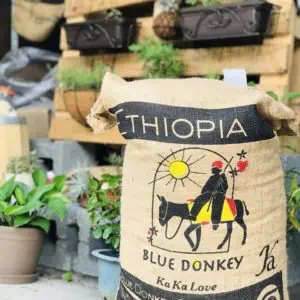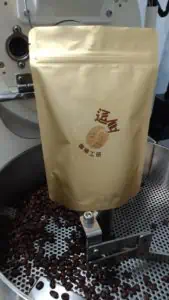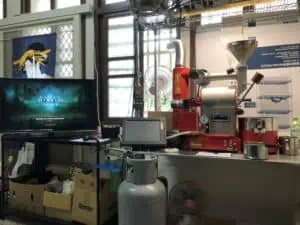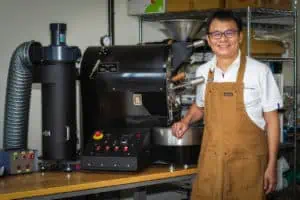When we put out our call for classic espresso blends for our June 2019 report, we were not prepared for the overwhelming response: We received 54 samples from roasters based in North America and 46 from roasters based in Asia, all in Taiwan. The magnitude of the response was, perhaps, due to our openness. We had decided not to be prescriptive about what constitutes “classic,” but to let roasters determine what to submit based on their own definitions.
Because of the number of coffees we received, we had to break the report into two parts: U.S. roasters in June and roasters from Taiwan in this month’s report. In the June report on classic espresso blends from U.S. roasters, two themes emerged as definitions of classic: Some roasters viewed the call as an opportunity to submit traditional Italian-style espresso blends that are accessible, chocolate-leaning and relatively uncomplicated, while others offered more “third wave” blend expressions tending toward brightness and complex intensity.
Last month, as now, we tested all coffees blind without regard for our own pre-conceptions of classic, evaluating each espresso by way of Coffee Review’s tasting system based on five sensory categories — aroma, mouthfeel, flavor, aftertaste, and performance in milk — and only later sorted out why a roaster submitted a given sample as an example of a “classic” espresso blend.
Our co-taster for the coffees from Taiwan roasters was Israel (Izzy) Fraire, director of operations at Bay Area CoRoasters (CoRo), a groundbreaking space for new specialty roasters that offers a collaborative roasting facility with affordable access to high-end equipment, as well as education and community-building. Together, Izzy and I tested the 15 espressos that had made it through our initial screening of the 46 that we received from roasters in Taiwan. Our barista was Coffee Review’s Jason Sarley, who pulled shots roughly within these parameters: 19 grams in, 38 grams out, over 27-28 seconds.
The Five Top-Scoring Espresso Blends
Of the 15 finalists we tested, the five we review here scored between 92 and 93; the remaining 10 scored between 85 and 89. Because each of these espresso blends approaches the notion of “classic” in an entirely different way, it’s really not possible to group them around coherent themes, so we’ll approach each as a unique expression. After all, that’s what blending is about — putting your own stamp as a roaster on a composition of carefully selected coffees.
The Closest We Got to Traditional Italian-Style “Classic”
Kakalove Café’s Caesar Tu is a coffee-industry veteran, having founded his own highly regarded roastery in 2013. While Tu works across a variety of eclectic coffee styles, he interpreted the call for classic espressos as referring to traditional Italian-style blends, so he submitted a moderately darker-roasted blend of washed coffees from Colombia, Guatemala and Ethiopia, which scored 93. Tu says that, for him, “Classic espresso means a coffee that doesn’t have a leading role; it’s just a base for cappuccino and latte. It should have an old soul, link relationships, and be comfortable to drink with friends or family, casually, without thinking too much about it.” His Black Meow Blend — bittersweet, chocolaty, and delicately roast-toned — is, playfully, named after his cat who hangs around the roastery. For Tu, this coffee is a good choice for people who want something inexpensive and perhaps an espresso to enjoy with sugar or brandy.

Ethiopia Blue Donkey coffee, a component in Kakalove Cafe’s Black Meow Blend. Photo courtesy of Caesar Tu.
A Classic By Any Other Name Would Be … New Wave
The remaining four coffees we review here are unique blends — not “classic” in any traditional sense, but certainly working toward coffee styles that these talented roasters hope will have lasting presence in the 21st century.

L2 LOVE Espresso Blend by DoDo Kaffa. Photo courtesy of Amanda Liao.
Taipei roaster Amanda Liao of DoDo Kaffa blended two coffees from different growing regions in Kenya (Nyeri and Kiambu) for her sweetly savory, spice-toned L2 Love Espresso Blend (93). This is a coffee that would be equally lovely prepared for brewed applications, and certainly a “classic” in regard to its celebrated origin and style (old-school Kenya).

Roasting at Dory Coffee Roasters in Taipei, Taiwan. Photo courtesy of Dory Coffee Roasters.
Dory Coffee Roasters’ Guatemala-Ethiopia Espresso Blend (93) combines both washed and natural-process Ethiopia coffees and a washed Guatemala to achieve a bright, floral, and sweetly herb-toned espresso shot, notes that persist nicely into the milk.

The roasting room at Small Eyes Cafe in Yilan, Taiwan. Photo courtesy of Sheng Hsu Chuang.
Sheng Hsu Chuang, also known as Tom Chuang, sent us what is perhaps the most avant-garde of the 46 coffees we tested, starting with the blend’s name: Sun Sun Sun Sun Sun Sun Sun Sun Sun. That’s not a typo; the repetition represents the nine different coffees (from Ethiopia, Panama, Guatemala and Honduras, all natural-processed) that went into this 93-rated blend. It is a fruit-bomb extraordinaire, more appealing in the straight shot than in milk with its deep, dessert-like fruit, candy, and rich floral notes.

Shih Hong Lin roasting at De Clieu Coffee Roasters. Photo courtesy of De Clieu Coffee Roasters.
De Clieu Coffee’s Karibu Espresso Blend (92) combines three natural-processed Ethiopia coffees with a washed Panama for an interesting sensory juxtaposition of sweet-tart fruit and spicy aromatic wood notes, a study in (integrated) contrasts.
A Six-Degrees-of-Separation Twist
Two of the roasters whose coffees we feature here, Jason Yu of Dory Coffee Roasters and Chi Hong Lin of De Clieu Coffee, happen to be students of roaster Kelly Wang of Greenstone Coffee, someone whose coffees we’ve reviewed for several years. We learned about these relationships by coincidence when corresponding with Wang after both Yu and Lin had reported to her the success of their blends in this month’s testing. Wang was a specialty coffee roaster without plans to teach, but when a coffee she roasted received a 95-point score from us here at Coffee Review (a washed Ethiopia Yirgacheffe Banko Gotiti), she was invited to collaborate with Cultural University in Taipei to lead a roasting course. Lin was Wang’s very first roasting student in 2017; she met Yu in 2018 and has been working with him one-on-one. Wang has kept up with both roasters and their progress, and she has gone on to teach 11 courses and more than 70 beginning roasters the craft.
Wang also offered some thoughts about how “classic” espresso might be interpreted by various kinds of roasters in Taiwan. She says, “Both Jason and Chi Hong are third-wave roasters. Young people here can accept espresso with some acidity and fruit tone — so many creative espressos can be popular if baristas can promote the concept to more customers.” She goes on to say that “older-style” roasters think of “classic espresso” as dark-roasted and bittersweet, hopefully with some chocolate notes. But she adds that, “Young roasters don’t like this style. They prefer lighter-roasted, fruitier coffees, both in the straight shot and in milk.”
Caesar Tu, of Kakalove Café, surmises that many younger roasters in Taiwan, or those new to the coffee industry, might have interpreted “classic” to mean their own favorite and most creative blends. He also attributes this interpretation to a language barrier; our communication with roasters in Taiwan can be difficult in regard to precise meanings. (Let’s just say that their English is infinitely better than our Mandarin.) Tu goes on to say that the Taiwanese, in general, are attracted to new experiences, so most serious specialty roasters are going for experimentation and innovation.
There Is No Conclusion
Sometimes, an inquiry raises more questions than answers, and this month’s report is a coffee case-in-point. One question is why we received 46 samples from Asia and all are from Taiwan. It may be as simple as the fact that Coffee Review’s presence may be more established in Taiwan than in other Asian regions. Our ‘Coffees from Taiwan’ [台灣送評的咖啡豆] page displays almost 400 reviews of fine coffees from Taiwanese roasters, considerably more than the number of reviews we display from other East Asian countries. And, despite an obvious language barrier, Taiwan has more Coffee Review readers than any other non-English speaking country. Of course, we would like to have an opportunity to review more coffees from other East Asian countries; in fact, more coffees from wherever in the world we have readers. But we also hope to facilitate even greater engagement with the coffee community in Taiwan and beyond by looking for ways to expand the amount of Coffee Review content available in Mandarin.
But for now, one thing is clear: The roasters from Taiwan whose coffees we tested for this report are obsessed with experimentation and unique blending concepts, and their creativity has resulted in a number of exciting, original espresso blends. Whether they are “classic” or not is also a question we decided we needn’t answer. These thoughtful artisanal coffee experiences are well worth seeking out, regardless of antecedent or tradition.










